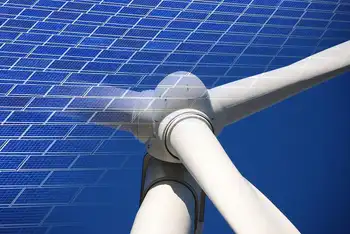Slender and Elegant, It Fuels the Bomb
By New York Times
Electrical Testing & Commissioning of Power Systems
Our customized live online or in‑person group training can be delivered to your staff at your location.

- Live Online
- 12 hours Instructor-led
- Group Training Available
The feat might have remained obscure, except that it helped define the nuclear era: by the 1960's, Zippe-type machines had become the easiest way to make fuel for reactors as well as weapons of terrifying power, for lighting cities or destroying them.
The invention was the uranium centrifuge, and around the world, millions of them now spin in high-security plants often ringed by barbed wire.
If a chief inventor has any regrets, he keeps them private. In a recent interview, he was philosophical about his team's brainchild, saying nations had the responsibility to determine whether the work would ultimately be judged good or evil.
"With a kitchen knife you can peel a potato or kill your neighbor," Dr. Zippe (pronounced TSIP-eh) said by phone from Munich, where at 86 he still works occasionally and flies off to international meetings. "It's up to governments to use the centrifuge for the benefit of mankind."
And benefits there are. Nuclear reactors, with Zippe-type centrifuges often making their uranium fuel, now generate about 16 percent of the world's electricity. That figure may rise in the decades ahead as worries grow about global warming and oil shortages.
But news of Dr. Zippe's invention has recently centered on the dangers of its illicit spread. Experts warn that it may put nuclear weapons into the hands of terrorists or states sympathetic to them.
Last month, a Pakistani nuclear expert, Abdul Qadeer Khan, admitted running a vast smuggling ring that had supplied at least three nations with Zippe-type centrifuges. It appears to be history's worst case of nuclear proliferation.
While nations congratulate themselves for exposing the network, private experts say the secretive centrifuge design at the heart of the illegal trade is still on the loose and the dangers of its misuse are far from over.
"It's small and you can procure the needed items in secret without being detected," said David Albright, president of the Institute for Science and International Security, an arms control group in Washington. "You end up with a small plant that's very hard to find."
The world may be in for an unsettling time if the future of the Zippe centrifuge is as surprising as its past. The tale of its development is full of striking twists, and no little sweat.
"It was very hard work," said Houston G. Wood, a centrifuge expert at the University of Virginia. "Problems of great difficulty had to be solved."
Born and raised in Austria, Dr. Zippe studied physics at the University of Vienna in the 30's and served in the German Luftwaffe as a flight instructor and a researcher on radar and airplane propellers. In 1945, the Russians took him as a prisoner to a special camp for the technically adept.
Moscow was desperate to catch up with Washington in nuclear arms. The hardest part was not the design but getting the fuel. Like all nuclear aspirants, Russia hoped to rearrange nature.
The work centered on isotopes, forms of the same element whose nuclei have different numbers of neutrons. The most prevalent isotope of uranium, which accounts for 99.3 percent of natural uranium, is U-238, with 146 neutrons. It is ever so slightly heavier than U-235, which has three fewer neutrons and accounts for just 0.7 percent of uranium in nature.
But U-235 is highly prized because it easily splits in two to produce bursts of atomic energy. When natural uranium is enriched to contain about 5 percent U-235, it can fuel nuclear reactors; to about 90 percent, atom bombs.
The Russians put Dr. Zippe and other German prisoners of war to work making centrifuges to obtain the rare U-235 isotope. The Americans had tried, but had turned to other methods that were quite bulky, arduous and costly.
The Russian team realized that uranium centrifuges would have to be linked up by the hundreds or thousands so that each could make tiny increases in the U-235 output, slowly raising the concentration. And to be economic and productive, the machines would have to spin continuously for years.
Centrifuges are common devices in industry and medicine that spin fast to separate materials of differing masses — for instance, blood cells from serum. Though they sound exotic, they are simple in principle. A washing machine on spin cycle is a centrifuge, its whirl creating artificial gravity that separates water (heavy) from clothes (light).
A good washing machine spins about 15 revolutions per second. The Russians — to have any hope of exploiting the minute differences in the masses of U-235 and U-238 in order to separate the nearly identical substances — needed centrifuges that spun about 100 times as fast, near the speed of sound.
"Everybody was laughing and said, `This will never work,' " Dr. Zippe recalled. "I was a young man. I had no idea how to do it. But I decided to do my best."
Among the 60 or so experts, Dr. Zippe, whose golden touch seemed to make mechanical things come to life, was soon appointed the team's lead experimenter. The general leader was Max Steenbeck, a physicist and former director of the German company Siemens.
The overall plan was clear, if not the means: start with a hollow, cylindrical rotor. Fill it with gaseous uranium. At the rotor's bottom, use pulsating magnetic fields (much like those of an electric motor) to spin it fast enough to throw the heavier U-238 toward the wall, letting the U-235 accumulate near the center. Slightly heating the bottom of the gaseous mix would produce currents that would tend to move the U-238 down and the U-235 up, where scoops could gather the isotopes.
To realize this ambitious plan, the team worked hard to defeat the main adversary of relentless spinning: friction, which can slow, cripple or destroy machines meant to work flawlessly for years. The rotor casing was evacuated to remove all air. A magnetic bearing was developed to hold the rotor's top steady, eliminating the need for physical support.
Perhaps most important, the team let the rotor rest on a needlelike bearing. It was the only point of physical contact for the spinning assembly, a tiny concession to the material world.
It took years of tinkering and experimentation. But the team finally got the complex devices to work.
The Germans "revolutionized the whole uranium fuel industry," said Pavel V. Oleynikov, a Russian historian of the postwar centrifuge effort.
In 1956, Dr. Zippe was set free, and he returned to Vienna. He went to a meeting in Amsterdam in 1957 and was astonished to learn that the West lagged far behind his team.
He decided to share what he knew. The Soviets had let him take no notes or reports. But as he recalled, "I had it in my head."
Dr. Zippe flew to the United States and, under government supervision, set up shop at the University of Virginia. There, he managed to recreate the Russian centrifuge.
Washington asked Dr. Zippe to join its secretive nuclear establishment and change his citizenship. He resisted. It was too reminiscent of his Soviet days. Instead, he wanted to use the invention for peaceful work, for enriching uranium for commercial reactor fuel.
Flying back to Europe in 1960, Dr. Zippe worked in industry, especially in West Germany, joining the European postwar drive for nuclear independence from the United States.
"He was a little like Oppenheimer," said Mr. Albright, of the arms control group, referring to Dr. J. Robert Oppenheimer, the American atom bomb leader who managed to get stubborn experts to work together. "He had a lot of help, but he was the real spark plug."
In the 1960's, Dr. Zippe and his associates managed to make the centrifuges even more efficient. They switched the rotor material from aluminum to the superhard alloy called maraging steel. That let the centrifuges spin faster, speeding the pace of enrichment without danger that the devices would tear themselves apart.
The team also managed to make the rotors longer, which increased the collection of U-235. It took special joints known as bellows, which let the long centrifuge, like a plucked string, flex and bow safely as its speed increased. "Ten times longer, ten times more," Dr. Zippe said. In the 1970's, Urenco, a new European consortium for making nuclear fuel, adopted Zippe-type designs. But its security for the potentially deadly technology was lax.
Dr. Khan, the Pakistani expert, worked as a consultant at a Urenco plant and stole the designs. He used them in Pakistan to build centrifuges to make nuclear arms fuel and, as recently disclosed, later sold centrifuge plans and machines to Iran, Libya and North Korea.
"This is a very sorry story," Dr. Zippe said.
A short man with a fondness for string ties and airplanes, which he piloted until he was 80, Dr. Zippe now divides his time between Vienna and Munich, where lives with a son. He says he still consults widely on technical issues, including centrifuges. "If they need something," he said of responsible companies, "I help them."
As for the future of the uranium centrifuge, many experts voice cautious optimism. Newer models are much harder to manufacture and less easily copied, especially illicitly. And the United States and its partners are still tracking down elements of the Khan network, insisting that the illegal traders will be put out of business.
For his part, Dr. Zippe foresees benign possibilities even if his handiwork continues to spread clandestinely. During the cold war, he pointed out, nations with nuclear arms restrained themselves because they understood that the awesome destructiveness could become mutual. "The reason America did not drop the bomb in Korea or Vietnam was fear that the Russians would retaliate," he said.
Today, he added, small states want nuclear arms not necessarily for the sake of aggression or terrorism but to deter foes.
"Let's hope," he said, "there's enough clever people not to use the bomb on people again."











